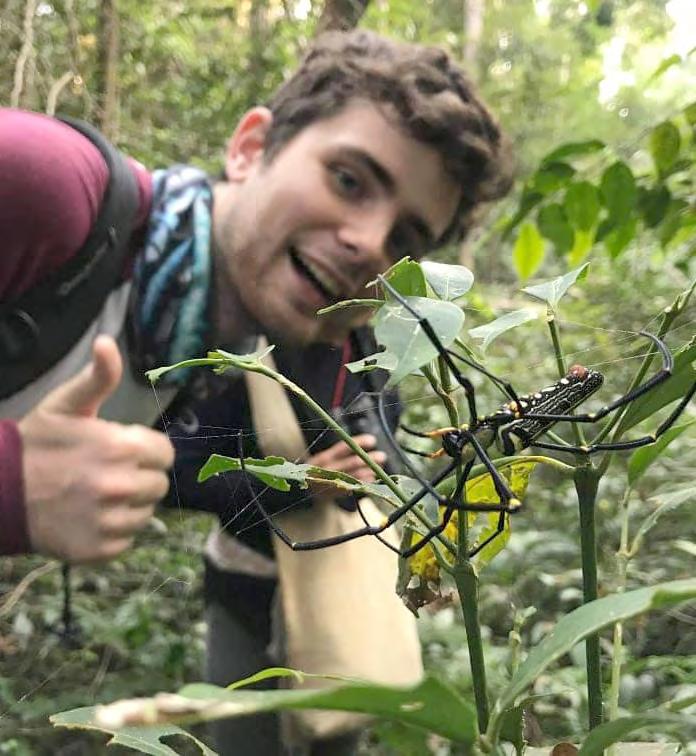
2 minute read
Meet Our Green Hero: Kieran Murray
Consultant at Fauna & Flora International, Cambodia
KLASSics Alumnus 2003 - 2014

David Wallace-Wells
Thanks for sharing your story with us! Tell us more about yourself and what you have been up to since school?
I’m a conservation biologist currently working for Fauna & Flora International (FFI) in Cambodia after completing my degree at the University of Southampton. I attended Alice Smith School from 2003 to 2014.
Did any experience in Alice Smith encouraged you to pursue environmental work?
Although I have always been interested in wildlife, my experiences in Alice Smith encouraged being involved with causes and thinking critically. School trips to Taman Negara, Tioman, Laos and Mongolia all prepared me for fieldwork seasons and being in remote places. Community work is also a big part of what FFI does and this was also encouraged during my schooling.
One incredibly vivid memory was learning about deforestation during a Biology lesson in Year 10, and by looking out of the window you would see the rainforest surrounding Equine Park being cleared. I recalled seeing gibbons in this same forest from the school field during a PE lesson in my earlier years. School was also closed a number of times during my time there due to the haze, which is driven by forest burning across Southeast Asia.
What an eye-opening experience. Can you tell us more about Fauna & Flora International?
What you do, why you do it and what impact does it bring towards the environment? Fauna & Flora International is the oldest international conservation NGO in the world (it began in 1903). FFI’s approach is to build local capacity to protect natural resources and wildlife through partnerships, community empowerment and working with policy makers in almost 40 countries. I like this approach to conservation because people who rely on natural resources and are affected by conservation initiatives are front and center in all aspects of our work. It is a huge honour to work for FFI and use my skills to help protect the environment.
I first joined FFI as an intern supporting the University Capacity Building Project. FFI helped their partner, Royal University of Phnom Penh to set up the Masters degree programme in Biodiversity Conservation, the first of it’s kind in Cambodia. Through this programme I worked with budding conservationists to strengthen their scientific and academic skills. I now work as a consultant supporting various aspects of the Coastal & Marine Conservation Programme, which works across the Cambodian coastline to protect marine species and habitats and support community fisheries. I have also been working on gibbon research in Northern Cambodia, thought to be the largest population worldwide of a species only described in 2010.
Such an incredibly fulfilling work, to be able to support the conservation of our environment. Do you have any tips for our alumni on sustainable activities they can get involved with?
Big, top-down changes are what people should aim for, depending on what aspect of sustainability is important to you, and what you feel able to influence. If you can work to change the policies of your business, workplace or school to produce less waste, avoid environmentally destructive practices or more generally use less, this has more impact than your individual actions.
Not eating endangered marine animals is something I’d like to see more widely adopted. Seafood is wildlife, and doing a little bit of research about what is widely eaten can be quite sobering. Many commercially fished species are critically endangered apex predators, with bluefin tuna being the most high-profile. Although at risk of extinction, no protection is in place because of their commercial value, and stockpiles are being prepared for sale when there are none left. Prawn production is also very destructive, with prawn farms driving destruction of mangrove forests (which protect the coastline and act as breeding grounds for fish species) and prawn fishing having the highest rate of bycatch (where non-target species including dolphins, sharks and turtles) are accidentally caught.





